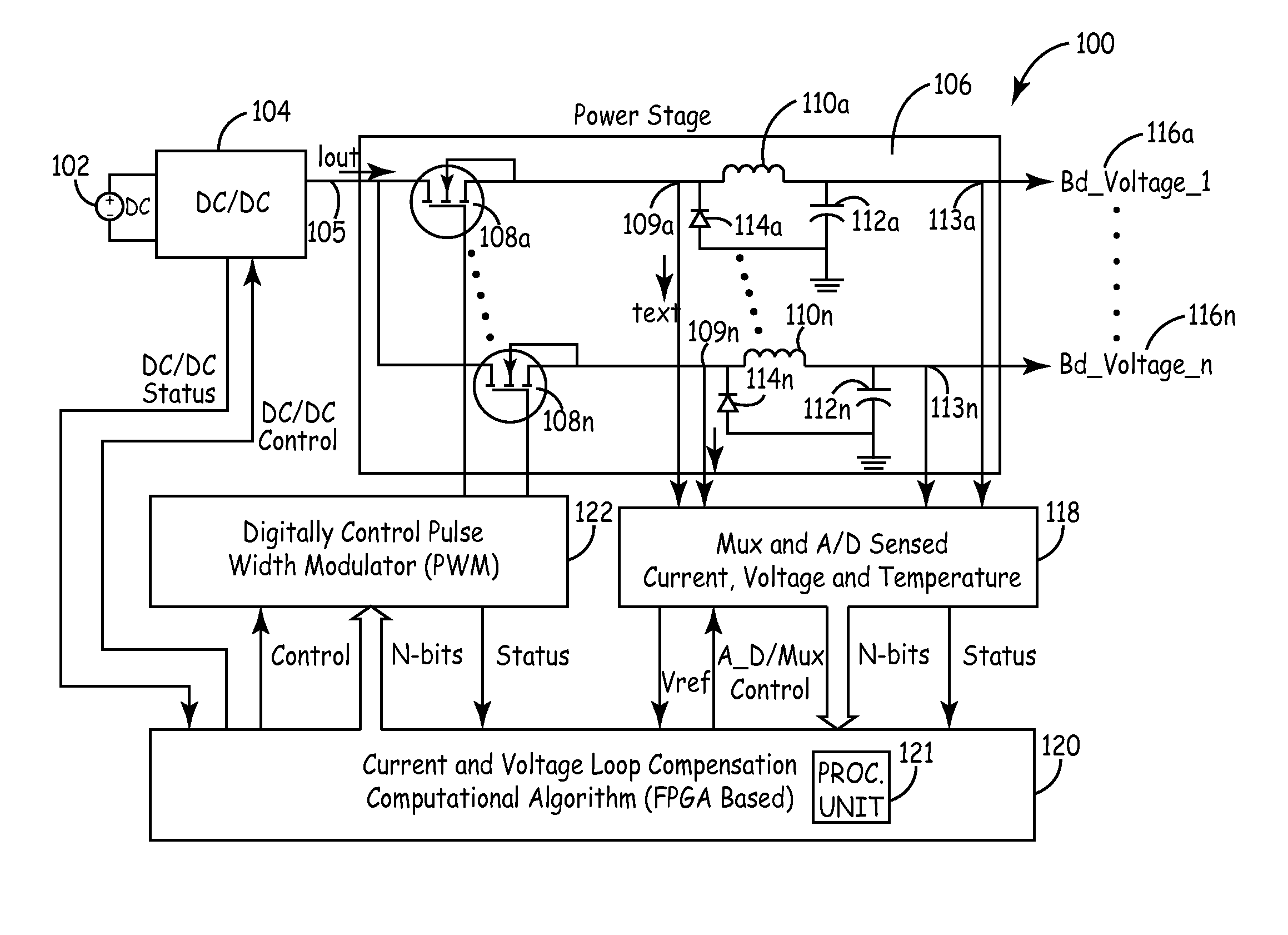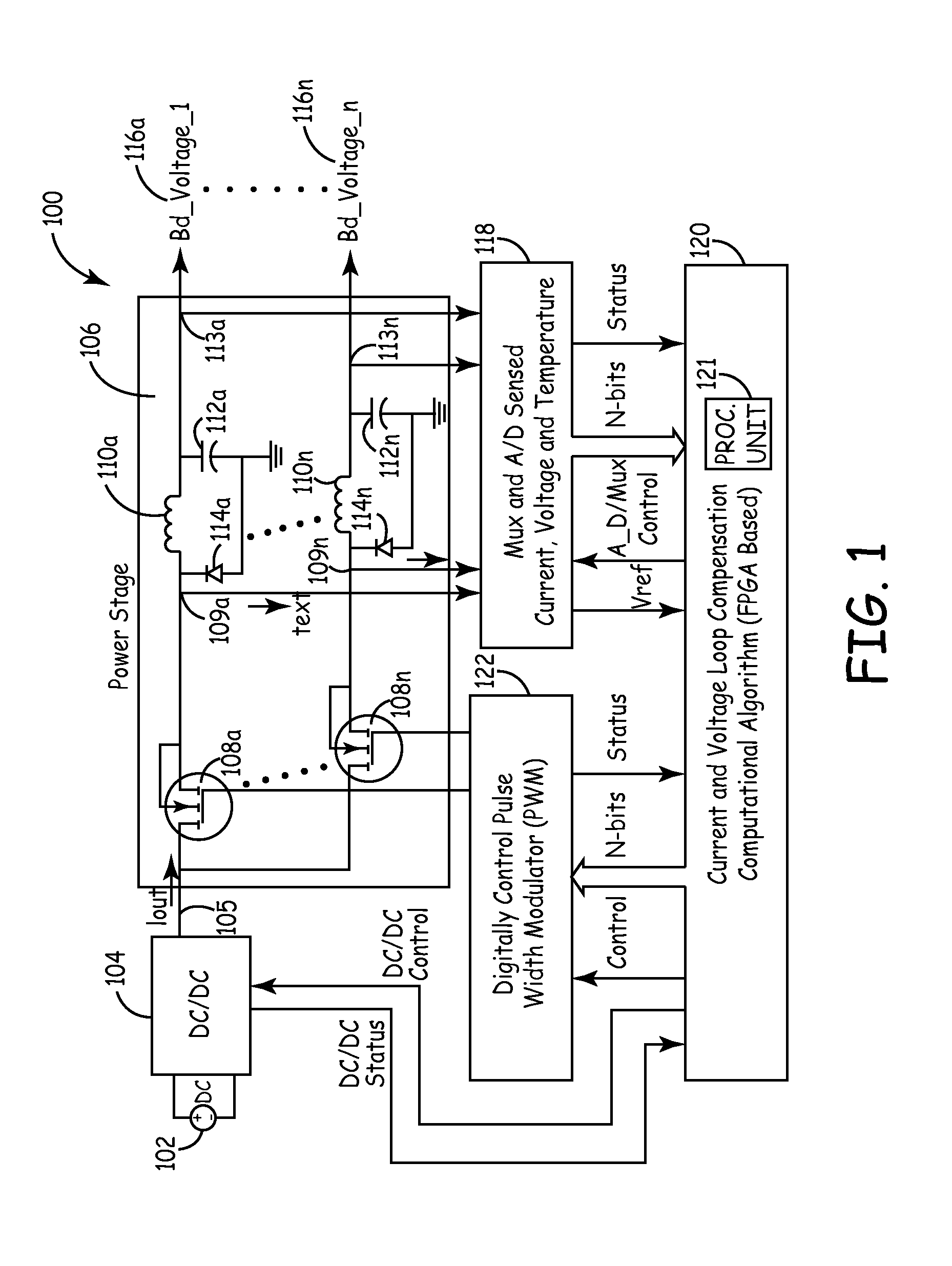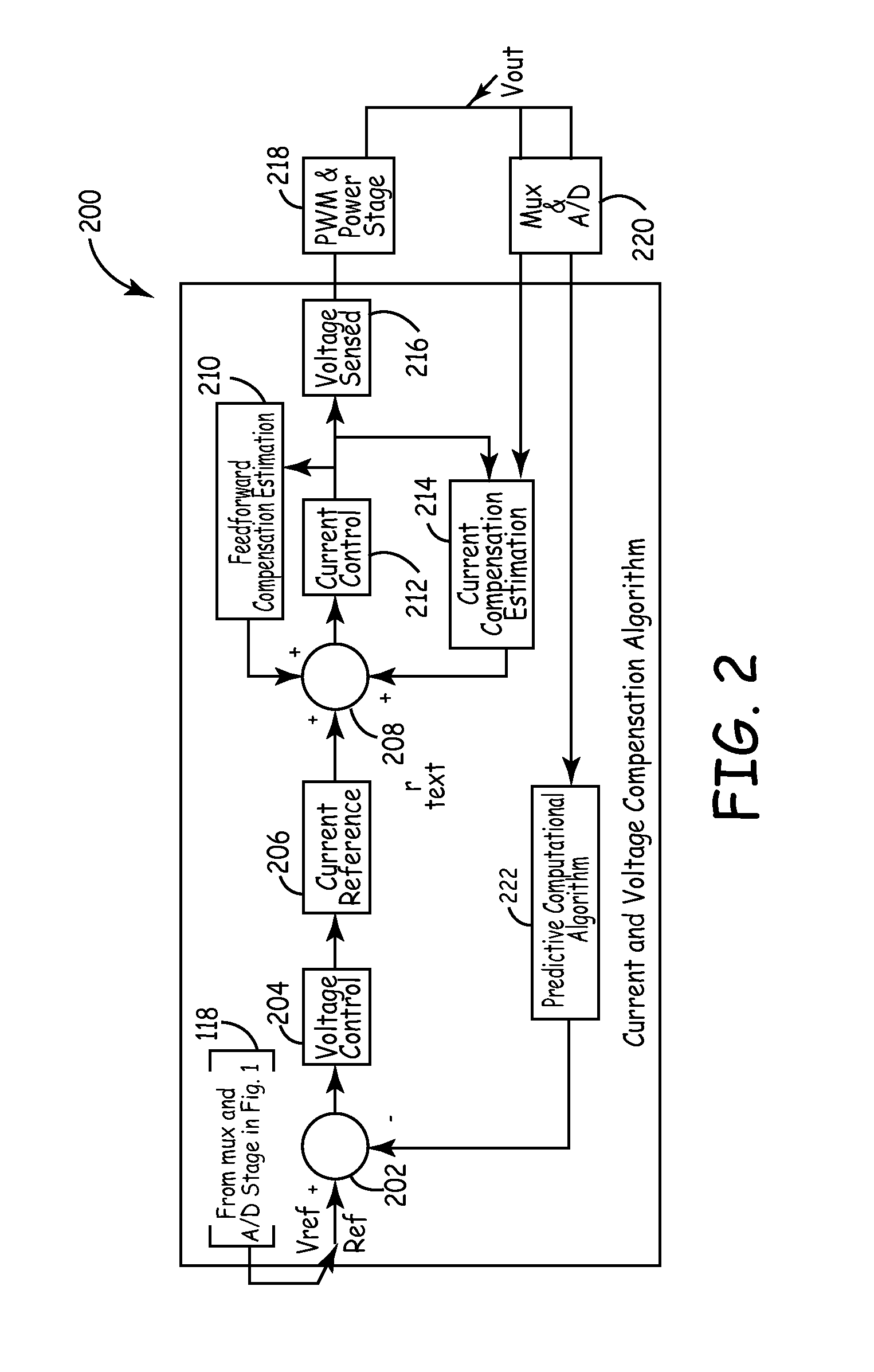Adaptive digital power control system
a digital power control and digital power technology, applied in the direction of liquid/fluent solid measurement, process and machine control, instruments, etc., can solve the problems of increasing noise, generating high current transients, and certain costs incurred (in terms of dynamic system performance)
- Summary
- Abstract
- Description
- Claims
- Application Information
AI Technical Summary
Benefits of technology
Problems solved by technology
Method used
Image
Examples
Embodiment Construction
[0007]With reference now to the figures, FIG. 1 depicts a block diagram of an example digitally controlled power (supply) system 100, which can be used to implement a preferred embodiment of the present invention. For example, system 100 can be used to generate a plurality of low core voltages for one or more processors of a high performance computing system operating in the GHz range. However, it should be understood that the present invention is not intended to be limited only to low voltage, high frequency power applications, and can also include, for example, any suitable digitally controlled power supply system that functions to compensate for and minimize high current transients and EMI-related noise or similar types of noise. For example, the present invention can be used for computing systems in certain high performance embedded electronics system applications, such as for the Next Generation Avionics (NGA) System, the Theater High Altitude Area Defense (THAAD) System Upgrad...
PUM
 Login to View More
Login to View More Abstract
Description
Claims
Application Information
 Login to View More
Login to View More - R&D
- Intellectual Property
- Life Sciences
- Materials
- Tech Scout
- Unparalleled Data Quality
- Higher Quality Content
- 60% Fewer Hallucinations
Browse by: Latest US Patents, China's latest patents, Technical Efficacy Thesaurus, Application Domain, Technology Topic, Popular Technical Reports.
© 2025 PatSnap. All rights reserved.Legal|Privacy policy|Modern Slavery Act Transparency Statement|Sitemap|About US| Contact US: help@patsnap.com



